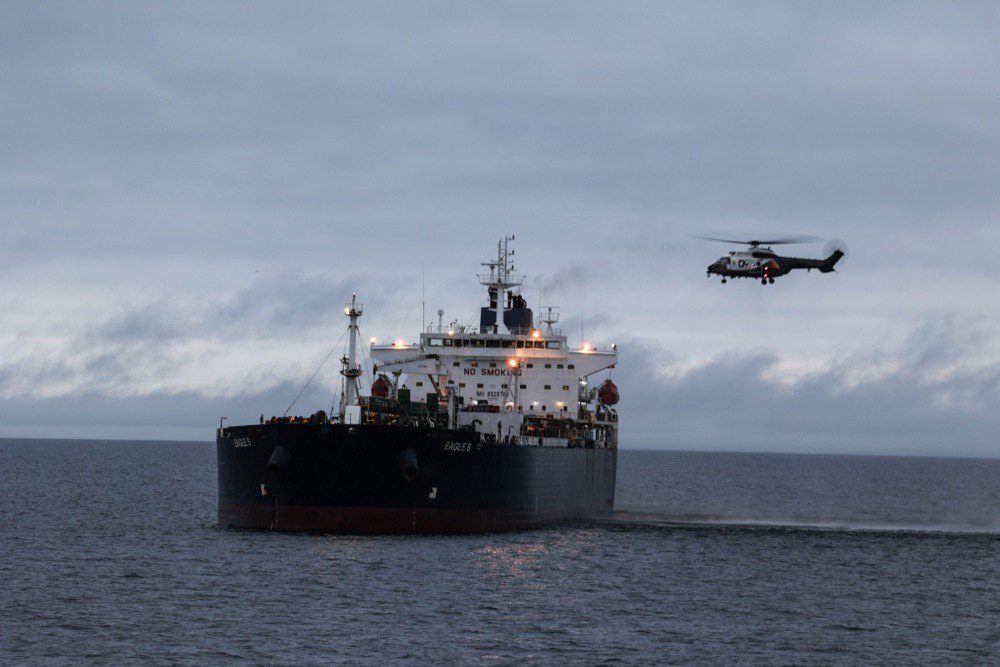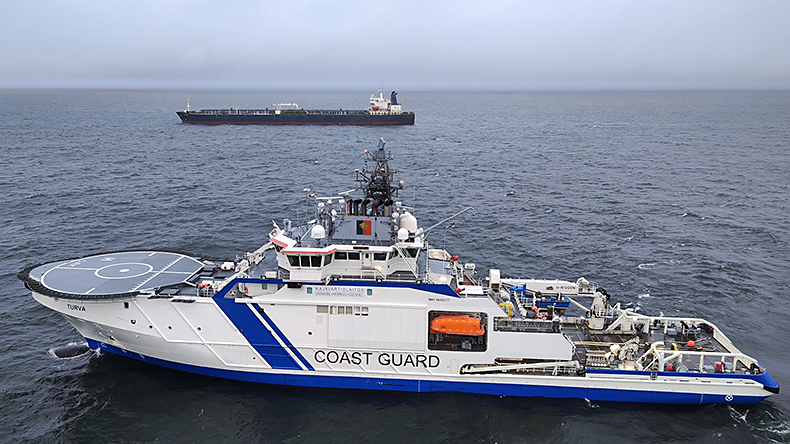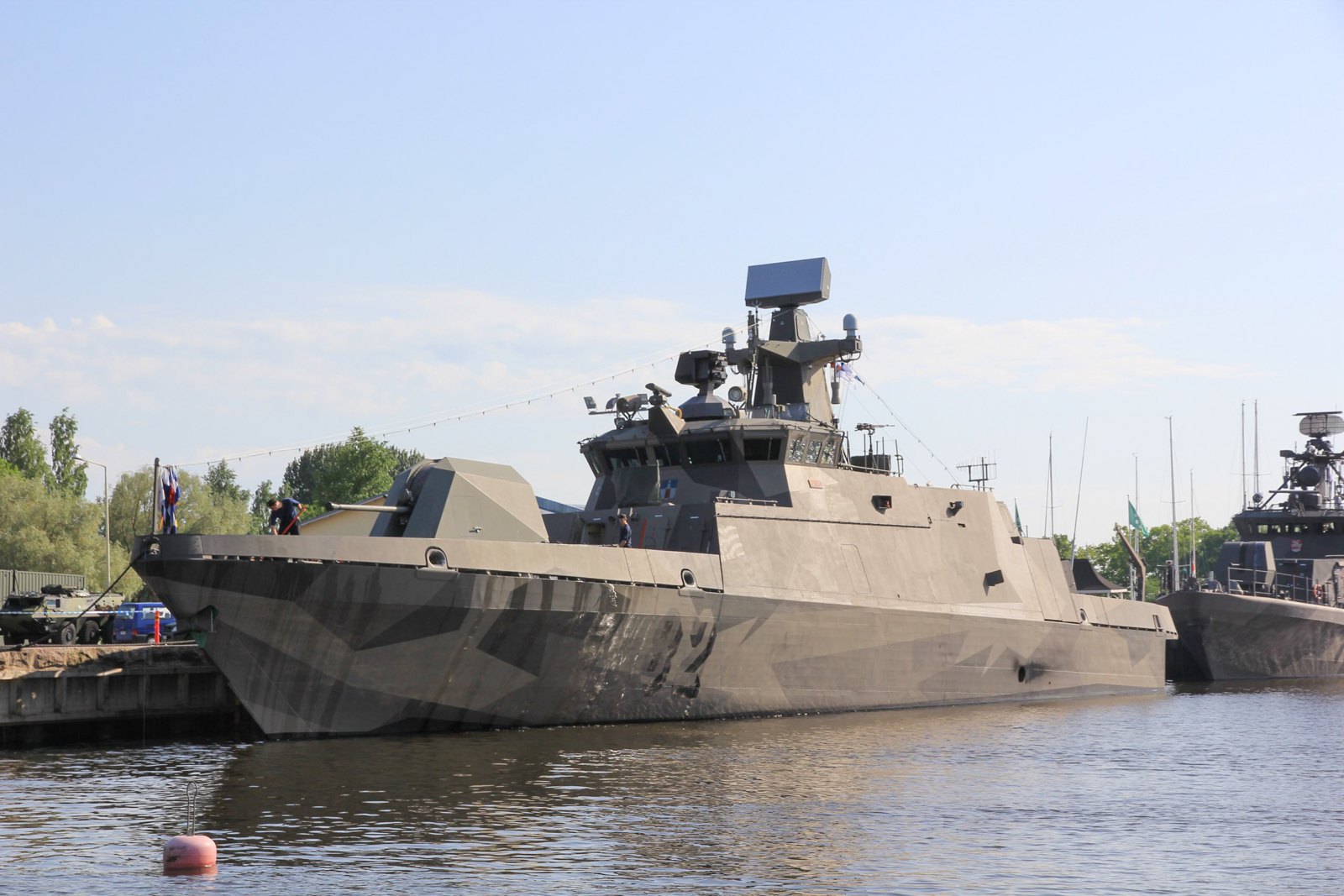
A recent example involves the Eagle S tanker, which was sailing under the flag of the Cook Islands with a cargo of Russian oil on 25 December. The ship’s anchor was dropped and dragged along the seabed for nearly 100 km before breaking off.
As a result, the Russians damaged the Estlink 2 power cable, which has a capacity of 650 MW. This cable is a key energy corridor between Finland and Estonia and plays a crucial role in balancing their energy systems. For context, Estonia’s total peak electricity consumption is 1,700 MW.
In response, the Estonian government has invested €110 million in a gas-fired power plant and a network of cogeneration units to enhance energy independence. Footage from Ukraine may have left a strong impression on the Baltic states—150 Shahed drones attacking in a single night, power substations and transformers ablaze, and widespread hourly blackouts.
Finnish authorities arrested the Eagle S tanker and its anchor. The captain and another crew member, suspected of damaging the cable, have been prohibited from leaving the country.
Additionally, Finnish officials have estimated potential consumer losses from the damage to be as high as €80 million in the coming months. The 35,000 tonnes of Russian petrol stored in the detained tanker could serve as compensation.
Moreover, spy equipment found on board the Eagle S presents an opportunity to confiscate the entire ship.

Finnish Foreign Minister Elina Valtonen stated that Finland and the EU are exploring legal measures under the law of the sea, including the possibility of stricter interpretations, to curb Russia’s shadow fleet.
One option under consideration is revising the maritime borders between Estonia and Finland around the islands, which could establish territorial waters and physically prevent Russian oil transshipment. In cases of violations, special forces could be deployed via helicopter to board suspect vessels.
Another approach is tightening insurance and maintenance requirements for vessels—many of which, being registered to offshore jurisdictions, are in poor condition. Meanwhile, Russia has accused Finland of piracy and is demanding the return of the oil seized from Eagle S.
Frankly speaking, only an elf would believe that the repeated damage to power and telecommunications cables is coincidental. The latest such incident occurred on Sunday, 26 January, when a fibre-optic cable from Sweden was damaged—reportedly by a Maltese-flagged vessel bound for a Russian port. Even in the bureaucratic EU, such incidents are unlikely to go unnoticed, regardless of what officials say publicly.

The decision by the Baltic states to take direct action against Russia’s shadow fleet is crucial. So is Donald Trump’s intention to work with OPEC to lower hydrocarbon prices, as well as the sanctions imposed by Joe Biden before the end of his term. And, of course, my favourite sanctions—Ukraine’s long-range drone and Neptune missile strikes targeting Russia’s oil and gas sector.
The consensus is clear: Kashchey demise lies in oil revenues—the money that funds high salaries for Russian troops, electronics purchases for sanction evasion, funeral payouts, and the recruitment of mercenaries from Africa and Asia.
Poland is forming a specialised force, backed by the Border Guard, to intercept, board, and inspect ships in the Baltic Sea.
Meanwhile, a NATO battlegroup—dubbed Baltic Command—has been deployed to Rostock. Operation Baltic Sentinel will resemble the Air Policing initiative, coordinating interceptions in response to threats. Even without the top EU economies, the combined naval power of Sweden, Norway, and Finland presents a formidable force in the region.

Moscow’s attempts to damage gas pipelines, fibre-optic networks, and internet cables—even at the cost of losing tankers carrying tens of thousands of tonnes of fuel—suggest that sanctions are biting.
And the Kremlin knows that in the event of a full-scale conflict, the Baltic Sea would be completely sealed off with naval mines, NSM (Norwegian Naval Strike Missile) batteries, patrol aircraft, and squadrons of fifth-generation fighter jets.
This is why Russia is engaged in a game of nerves: sabotage, provocative statements, long-range aircraft patrols, and spy vessel deployments.
It is likely that Moscow will soon develop its own naval drones—both to counter potential blockades and to intimidate its neighbours.
One thing is certain: this does not signal any intention for a just peace or a swift end to the war. The Kremlin remains committed to maintaining a shadow fleet, threatening the EU with war, and targeting civilian infrastructure. These are unmistakable indicators that the war will continue.







